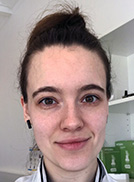Circulating tumour DNA as a biomarker for recurrence in colorectal cancer
The risk of relapse in colorectal cancer (CRC) remains high, even after surgical resection. Addressing this, a recent study has found circulating tumour DNA (ctDNA) to be a superior biomarker of recurrence risk, compared to current plasma biomarkers and radiological detection methods. Interestingly, a ‘molecular recurrence’ in circulating tumour DNA was detected at a median of 8 months before the radiological detection of recurrence.
Introduction
Despite a curative intent surgery, approximately 20-30% of colorectal cancer patients will relapse a disease relapse after a certain amount of time. In this respect, the identification of a suitable marker of disease progression would allow for the stratification of risk and earlier treatment in high-risk populations, thereby increasing the number of CRC patients treated with curative intent. Addressing this, a study recently presented at ASCO GI 2021 assessed the applicability of circulating tumour DNA (ctDNA) as a marker of minimal residual disease (MRD) to stratify patients into low or high risk of recurrence groups. In addition, the study looked into the potential of this biomarker to as assess the efficacy of adjuvant therapy and as a method to detect the relapse earlier than what is feasible with standard radiological imaging.
To this end, plasma samples of 265 post-resected stage I-III CRC patients were collected at 30 days post-surgery, and every 3 months thereafter for a total of 3 years. In addition, tissue samples were collected intra-operatively. CT scans were performed at 12- and 36-months post-surgery. The outcome of these scans were then compared against plasma samples to determine a lead time of ctDNA detection, compared to radiological recurrence. Next generation sequencing was used to detect ctDNA (Signatera mPCR NGS assay).
ctDNA detects recurrence 8 months earlier than radiological imaging
Postoperative (< 2 months post-surgery) ctDNA detection was performed in a total of 218 patients, indicating MRD positivity in 9.17% of them. Of these MRD-positive patients, 80% eventually relapsed. Notably, the remaining 20% of MRD-positive patients who did not relapse all received adjuvant chemotherapy. Conversely, only 13% of MRD-negative patients experienced a relapse. ctDNA negative patients postoperatively had a significantly better relapse free survival compared to ctDNA positive patients (HR[95%CI]: 11[5.9-21]; p< 0.0001). Longitudinal ctDNA monitoring provided more accurate data, finding a relapse rate of only 3.4% in ctDNA-negative patients as compared to 89.3% in the ctDNA-positive population, (HR[95%CI]: 51[20-125], p< 0.0001). Serial sampling also identified a median lead time of 8.1 months from the detection of a recurrence in ctDNA to a radiological confirmation of a recurrence on CT. Finally, ctDNA was also found to outperform CEA as a biomarker for RFS in a multivariate analysis (longitudinal CEA: HR[95%CI]: 1.8[0.77-4.0], p= 0.184; longitudinal ctDNA: HR[95%CI]: 80.55[23.1-281], p< 0.0001).
Conclusions
In summary, ctDNA monitoring in postoperative stage I-III CRC patients offers superior detection of recurrence compared to both radiological and CEA biomarker monitoring. Furthermore, longitudinal monitoring of ctDNA levels further increased its predictive power, demonstrating an earlier detection of recurrence compared to CT detection. Finally, the identification of a subset of MRD-positive patients who received adjuvant chemotherapy and did not relapse represents a potential subgroup of patients who may benefit from post-operative, adjuvant chemotherapy in this setting, with ongoing trials subsequently investigating this subgroup further.
Reference
Henriksen T et al., Circulating tumor DNA analysis for assessment of recurrence risk, benefit of adjuvant therapy, and early relapse detection after treatment in colorectal cancer patients. Presented at ASCO GI 2021; Abstract 11.

